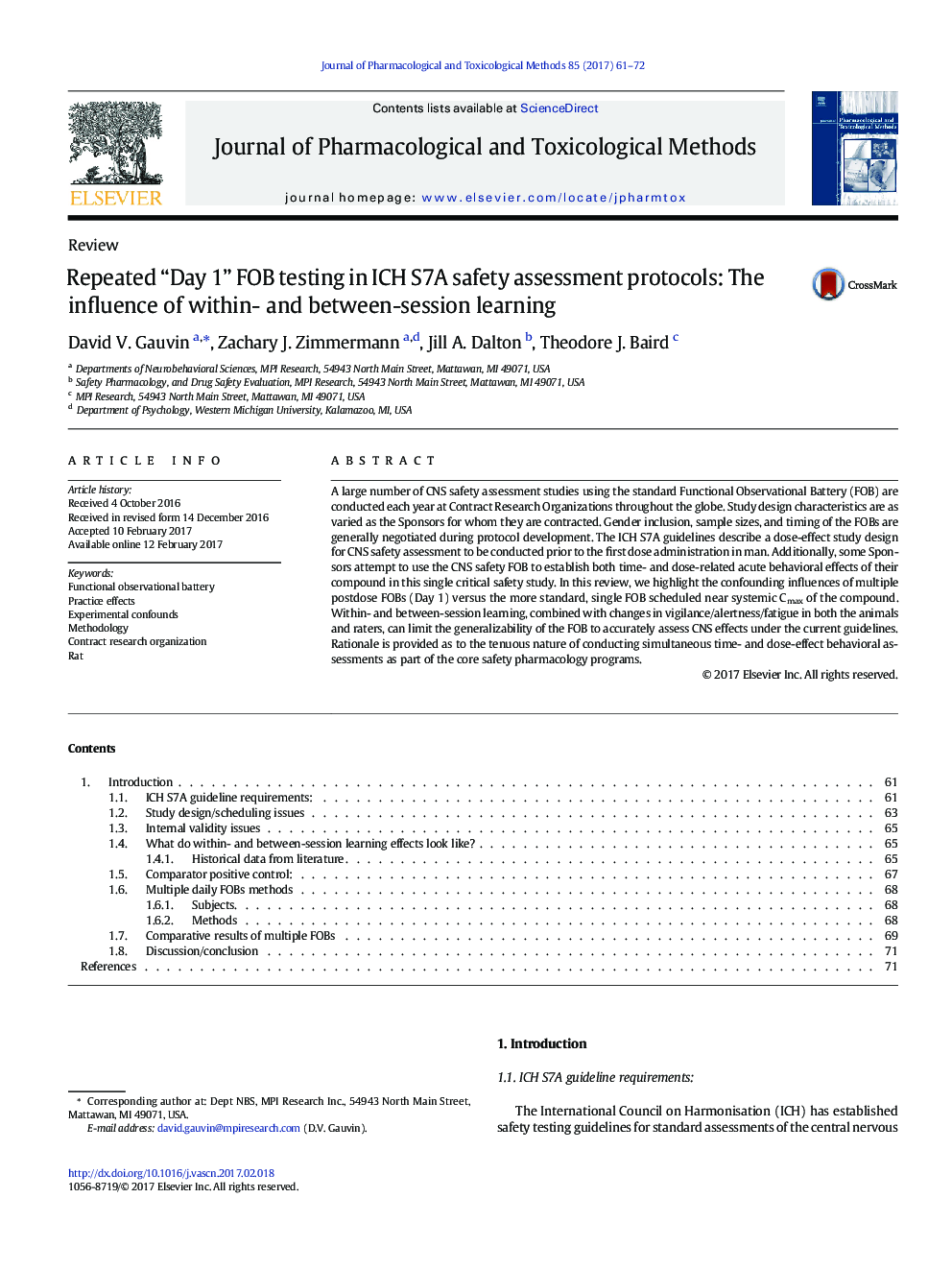| Article ID | Journal | Published Year | Pages | File Type |
|---|---|---|---|---|
| 5556527 | Journal of Pharmacological and Toxicological Methods | 2017 | 12 Pages |
A large number of CNS safety assessment studies using the standard Functional Observational Battery (FOB) are conducted each year at Contract Research Organizations throughout the globe. Study design characteristics are as varied as the Sponsors for whom they are contracted. Gender inclusion, sample sizes, and timing of the FOBs are generally negotiated during protocol development. The ICH S7A guidelines describe a dose-effect study design for CNS safety assessment to be conducted prior to the first dose administration in man. Additionally, some Sponsors attempt to use the CNS safety FOB to establish both time- and dose-related acute behavioral effects of their compound in this single critical safety study. In this review, we highlight the confounding influences of multiple postdose FOBs (Day 1) versus the more standard, single FOB scheduled near systemic Cmax of the compound. Within- and between-session learning, combined with changes in vigilance/alertness/fatigue in both the animals and raters, can limit the generalizability of the FOB to accurately assess CNS effects under the current guidelines. Rationale is provided as to the tenuous nature of conducting simultaneous time- and dose-effect behavioral assessments as part of the core safety pharmacology programs.
